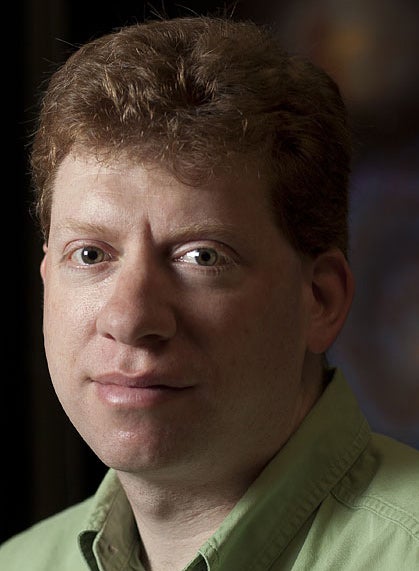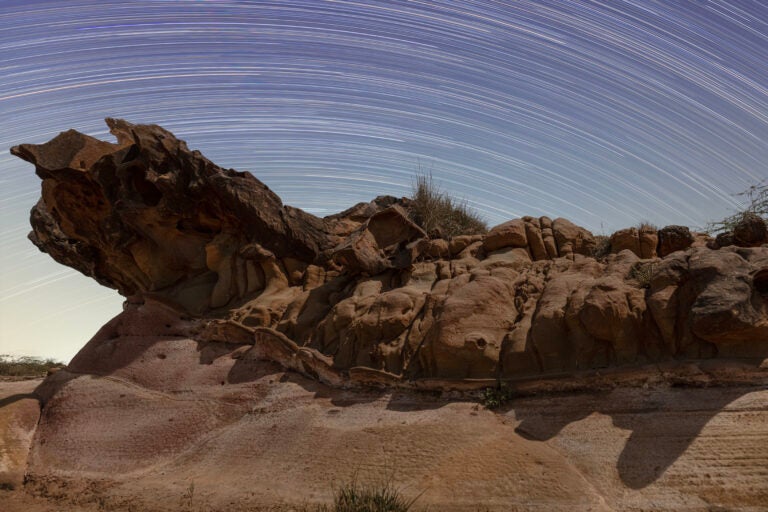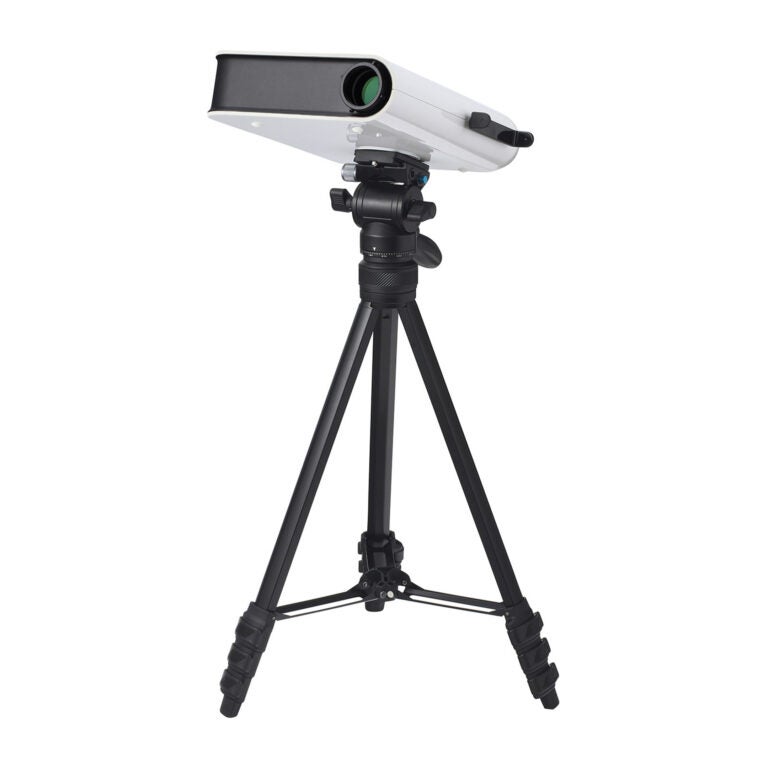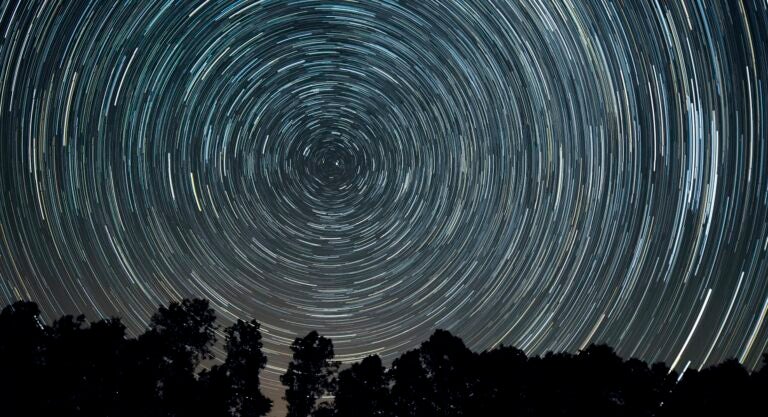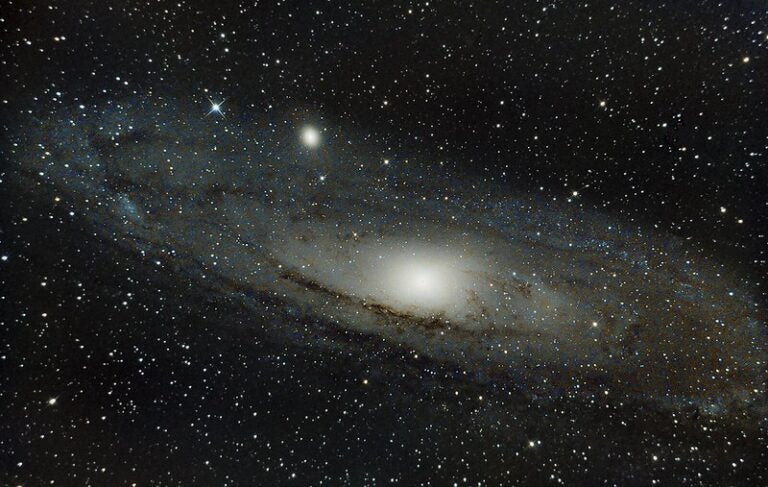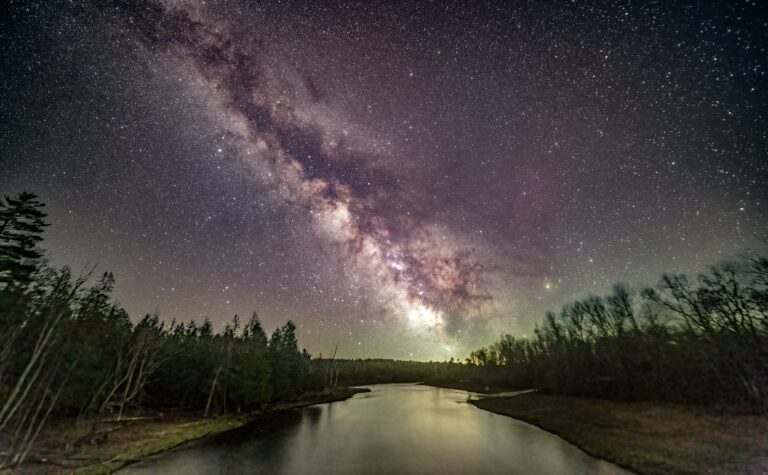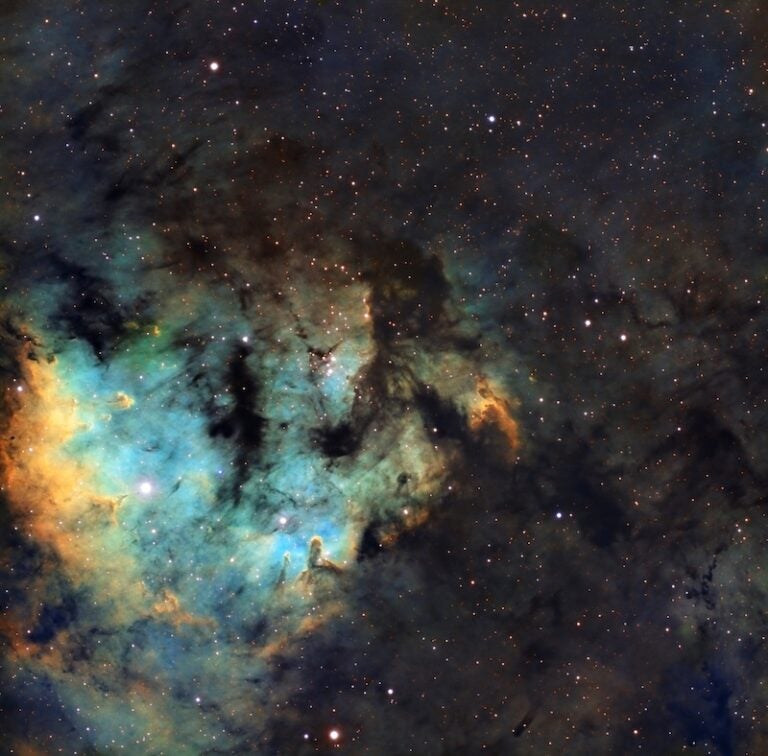This philosophy reaches its greatest achievements through the use of object masks because they are self-referential and strongly correlated to the luminance and spatial mapping of the image itself.
Although how software generates object masks varies from program to program, their application is almost always the same. Here, I used Photoshop.
To enter a layer mask in Photoshop, press (and hold) the ALT key and then left-click on the layer mask icon. This brings you into the layer mask space, and you can paste the image.
Your “Layers” palette should now look like mine (see image #1). If you start with a color image, once you paste it into the layer mask, it will be a grayscale image and represent opacities (see November’s column).
You need to adjust this mask in two ways. First, the mask shows bright elements of the object as white and the sky background as black. Once you apply noise reduction to the upper layer, you want the mask to reveal the areas that need the smoothing and hide (protect) areas that have high signal.
In Photoshop, navigate through the “Image” menu to “Adjustments.” Apply “Invert” (CRTL+I). For the second adjustment, use “Levels” to make more of the object (including stars) black in the mask.
You now have constructed what I call an inverted threshold object mask. Most things that are above the sky background level — real things — are now black, and the smoothed layer will not contribute here (see image #2).
After making the upper layer active, I smoothed the image by first reducing “Noise” under the “Filters” menu. Typically, I set the strength to 2 or 3 with the other slider adjustments being small values (see image #3).
Finally, consider using one more of my image-processing tricks: Modify the black of the mask to a dark-gray value.
This will let you apply less noise reduction to the bright areas of the image. Using “Levels,” move the “Output” slider instead of the normal “Input” upper slider, and turn the black of the mask gray.
This isn’t a necessary step for all images, but it is a powerful variation when needed. In my next column, I’ll continue with masks and show you how to blend a deconvolved image with an original image using an object mask.

